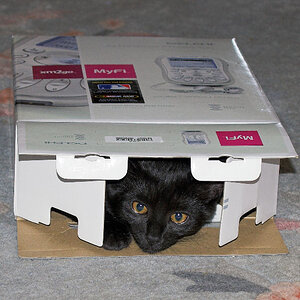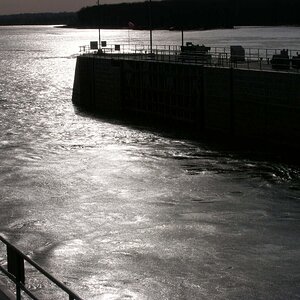Navigation
Install the app
How to install the app on iOS
Follow along with the video below to see how to install our site as a web app on your home screen.

Note: This feature currently requires accessing the site using the built-in Safari browser.
More options
You are using an out of date browser. It may not display this or other websites correctly.
You should upgrade or use an alternative browser.
You should upgrade or use an alternative browser.
Tips for the nightlife scene
- Thread starter Alter_Ego
- Start date
- Joined
- May 1, 2008
- Messages
- 25,418
- Reaction score
- 4,999
- Location
- UK - England
- Website
- www.deviantart.com
- Can others edit my Photos
- Photos OK to edit
With no flash you are going to be limited - the best bet is a wide aperture lens. Something like a 50mm f1.8 - a cheap budget option but still surprisingly sharp for its cheap cost - would suit the need for that aspect. After that your only other option is to raise you ISO very high and expose very well. Chances are you will get a lot of noise in those shots, especailly when working with a lower end camera body. However its the only way you will get the shutter speed fast enough to capture the motion without using flash.
You will also most likley have to practice manual focusing as well as working with an ultra thin depth of field since wide apertures will not give you much depth to work with.
You will also most likley have to practice manual focusing as well as working with an ultra thin depth of field since wide apertures will not give you much depth to work with.
mdtusz
TPF Noob!
- Joined
- Feb 10, 2010
- Messages
- 259
- Reaction score
- 0
- Location
- Victoria BC
- Can others edit my Photos
- Photos OK to edit
You need the flash. That's what freezes the action, not the shutter speed. 90% of nightlife photography you see is (probably) shot at ISO 500ish, 1/2-1/10, f/4-5.6 and with an off camera flash (or flash bracket). Somebody correct me if I'm wrong though.
- Joined
- May 1, 2008
- Messages
- 25,418
- Reaction score
- 4,999
- Location
- UK - England
- Website
- www.deviantart.com
- Can others edit my Photos
- Photos OK to edit
Flash will freeze motion, but a fast shutter speed also will. In good lighting the flash is not nessessarily needed as the shutter can capture the motion whilst also exposing the shot correctly.
In dimmer "nightlife" lighting situations the problem is that there is often not enough light to let the shutter close fast enough and get enough light in to expose the shot. That is why you use a wide (big) aperture (small f number) to let as much light in as possible as well as raise the ISO so that the little light you have goes further. As said each of those comes at a cost - aperture, depth of field and ISO in noise.
Flash will help to boost the ambient lighting conditions and let you get that frozen motion, but used incorrectly it can also give that "flash was used" look to the shot and take away the character of the lighting.
Either way there are skills to learn to get the best out and this is on area where what camera body and lens you have is going to make a big difference. Got a 5DM2 and the high ISOs are fine - got a lower end entry level camera body and those ISOs will be far more noisey
In dimmer "nightlife" lighting situations the problem is that there is often not enough light to let the shutter close fast enough and get enough light in to expose the shot. That is why you use a wide (big) aperture (small f number) to let as much light in as possible as well as raise the ISO so that the little light you have goes further. As said each of those comes at a cost - aperture, depth of field and ISO in noise.
Flash will help to boost the ambient lighting conditions and let you get that frozen motion, but used incorrectly it can also give that "flash was used" look to the shot and take away the character of the lighting.
Either way there are skills to learn to get the best out and this is on area where what camera body and lens you have is going to make a big difference. Got a 5DM2 and the high ISOs are fine - got a lower end entry level camera body and those ISOs will be far more noisey
hankejp
TPF Noob!
- Joined
- Aug 24, 2008
- Messages
- 608
- Reaction score
- 0
- Location
- Wausau, Wisconsin
- Can others edit my Photos
- Photos OK to edit
Either way there are skills to learn to get the best out...
Isn't that the truth. The last place I shot was almost completely dark except for the band lights. I didn't like the photos at all. For the most part the were blurry I think the Shutter may have been too slow:
ISO: 200
Exposure: 1/10 sec
Aperture: 2.8
Focal Length: 75mm
Flash Used: Yes

ISO: 200
Exposure: 1/10 sec
Aperture: 2.8
Focal Length: 75mm
Flash Used: Yes

ISO: 200
Exposure: 1/10 sec
Aperture: 2.8
Focal Length: 28mm
Flash Used: Yes

ISO: 200
Exposure: 1/10 sec
Aperture: 2.8
Focal Length: 28mm
Flash Used: Yes

- Joined
- May 1, 2008
- Messages
- 25,418
- Reaction score
- 4,999
- Location
- UK - England
- Website
- www.deviantart.com
- Can others edit my Photos
- Photos OK to edit
You'r aperture is right (I'm guessing 2.8 is as wide as it will go) and that last one is showing a good use of composing and trying to go for a moment in the act.
The blur is coming from your shutter speed - 1/10sec is way too slow - get that up to 1/60 at the very least - 1/100 or faster is better. For that your ISO is going to have to go up - 800 at least I would guess. It means noise, but if you practice and try to also slightly overexpose the shot (not so that you get big white patches, but to ensure the most data capture possible) you might be able to get away with less noise.
http://www.zarias.com/?p=481
first part is not really on your area, but keep waiting and it gets onto some nighttime and band photography. A few tips and also a good dispaly of the "moments" aspect I was refering to.
The blur is coming from your shutter speed - 1/10sec is way too slow - get that up to 1/60 at the very least - 1/100 or faster is better. For that your ISO is going to have to go up - 800 at least I would guess. It means noise, but if you practice and try to also slightly overexpose the shot (not so that you get big white patches, but to ensure the most data capture possible) you might be able to get away with less noise.
http://www.zarias.com/?p=481
first part is not really on your area, but keep waiting and it gets onto some nighttime and band photography. A few tips and also a good dispaly of the "moments" aspect I was refering to.
hankejp
TPF Noob!
- Joined
- Aug 24, 2008
- Messages
- 608
- Reaction score
- 0
- Location
- Wausau, Wisconsin
- Can others edit my Photos
- Photos OK to edit
You'r aperture is right (I'm guessing 2.8 is as wide as it will go) and that last one is showing a good use of composing and trying to go for a moment in the act.
The blur is coming from your shutter speed - 1/10sec is way too slow - get that up to 1/60 at the very least - 1/100 or faster is better. For that your ISO is going to have to go up - 800 at least I would guess. It means noise, but if you practice and try to also slightly overexpose the shot (not so that you get big white patches, but to ensure the most data capture possible) you might be able to get away with less noise.
http://www.zarias.com/?p=481
first part is not really on your area, but keep waiting and it gets onto some nighttime and band photography. A few tips and also a good dispaly of the "moments" aspect I was refering to.
Thank you for the tips. I will give it a try. Yeah I am using a Tammy 28 -75 2.8 on a D90. Once I posted this I saw the shutter speed and thought that might be it.
Thanks again.
gsgary
Been spending a lot of time on here!
- Joined
- Oct 31, 2008
- Messages
- 16,143
- Reaction score
- 3,002
- Location
- Chesterfield UK
- Website
- www.gsgary.smugmug.com
- Can others edit my Photos
- Photos OK to edit
Either way there are skills to learn to get the best out...
Isn't that the truth. The last place I shot was almost completely dark except for the band lights. I didn't like the photos at all. For the most part the were blurry I think the Shutter may have been too slow:
ISO: 200
Exposure: 1/10 sec
Aperture: 2.8
Focal Length: 75mm
Flash Used: Yes

ISO: 200
Exposure: 1/10 sec
Aperture: 2.8
Focal Length: 75mm
Flash Used: Yes

ISO: 200
Exposure: 1/10 sec
Aperture: 2.8
Focal Length: 28mm
Flash Used: Yes

ISO: 200
Exposure: 1/10 sec
Aperture: 2.8
Focal Length: 28mm
Flash Used: Yes

Why iso200
syndony
TPF Noob!
- Joined
- Mar 10, 2010
- Messages
- 4
- Reaction score
- 0
- Can others edit my Photos
- Photos OK to edit
Low ISO settings are beneficial in nightclub photography because they reduce the amount of sensor noise that will show up in the photos. But with a low ISO setting, the sensor doesn’t pick up as much light as it can with higher ISO settings. Because most nightclub photography is done in low light situations, which settings are best for nightlife photographers to use?
It depends on the light environment at the nightclub. Some nightclubs are brighter than others, and you can use a lower ISO setting without much issue. Others are very dark, and you’ll need to increase the ISO to get the light you need, while also keeping the shutter speed high to minimize motion blur.
I like to start with my ISO set at 800 in most nightclubs. I’ve found this setting gives the best bang for your buck in nightlife photography. There isn’t too much noise for most camera bodies, and it burns just the right amount of light onto the sensor. I use this setting when taking close-up portraits of party people in the club. I often use different ISO settings for performers and large crowd shots.
You can’t just “set it and forget it” in nightclub photography because the people, light, and action are constantly changing, and you need to change with them to get the best photos.
It depends on the light environment at the nightclub. Some nightclubs are brighter than others, and you can use a lower ISO setting without much issue. Others are very dark, and you’ll need to increase the ISO to get the light you need, while also keeping the shutter speed high to minimize motion blur.
I like to start with my ISO set at 800 in most nightclubs. I’ve found this setting gives the best bang for your buck in nightlife photography. There isn’t too much noise for most camera bodies, and it burns just the right amount of light onto the sensor. I use this setting when taking close-up portraits of party people in the club. I often use different ISO settings for performers and large crowd shots.
You can’t just “set it and forget it” in nightclub photography because the people, light, and action are constantly changing, and you need to change with them to get the best photos.
mdtusz
TPF Noob!
- Joined
- Feb 10, 2010
- Messages
- 259
- Reaction score
- 0
- Location
- Victoria BC
- Can others edit my Photos
- Photos OK to edit
The reason the pictures posted above are blurry are more because of the aperture than shutter speed. Bump it up a bit to around 4 and use a little more power on your flash and the shots should be clear. Like said above many times before, the flash is what freezes the motion. Who cares if the background is blurred with colour.
Use shutter speed to control ambient, and aperture to control the brightness of the flash on the subject. ISO will change the other two accordingly, but lots of the time a bit of blur from coloured lights is nice, so a low ISO isn't always a bad thing. Rear curtain sync as well is a bonus if you feel comfortable enough framing with that (if you're moving the camera around doing fun stuff like that).
Use shutter speed to control ambient, and aperture to control the brightness of the flash on the subject. ISO will change the other two accordingly, but lots of the time a bit of blur from coloured lights is nice, so a low ISO isn't always a bad thing. Rear curtain sync as well is a bonus if you feel comfortable enough framing with that (if you're moving the camera around doing fun stuff like that).
myfotoguy
TPF Noob!
- Joined
- Feb 15, 2010
- Messages
- 856
- Reaction score
- 2
- Location
- Minnesota
- Can others edit my Photos
- Photos OK to edit
A lot of good stuff mentinoed here. Not much to add, except if you want a guide on "dragging the shutter" visit 03 – dragging the shutter Neil vN – tangents
I often use slow-rear sync in mnaual and set my shutterspeed to around 1/30 - 1/100 and let the flash do the rest. Sometimes I raise the ISO so the flash doesn't need to use as much power and bring in more of the ambient.
EDIT TO ADD: That Planet Neil site has a lot of great flash info, you may want to start at '01' and work your way through.
I often use slow-rear sync in mnaual and set my shutterspeed to around 1/30 - 1/100 and let the flash do the rest. Sometimes I raise the ISO so the flash doesn't need to use as much power and bring in more of the ambient.
EDIT TO ADD: That Planet Neil site has a lot of great flash info, you may want to start at '01' and work your way through.
hankejp
TPF Noob!
- Joined
- Aug 24, 2008
- Messages
- 608
- Reaction score
- 0
- Location
- Wausau, Wisconsin
- Can others edit my Photos
- Photos OK to edit
Sorry to hijack the thread, but thanks to all for the tips. I will definately be printing this out for the next time I go out to shoot in a club.
Good stuff here.....
Good stuff here.....
modlife
TPF Noob!
- Joined
- Dec 25, 2008
- Messages
- 121
- Reaction score
- 0
Good tips. I have to add that just like in any indoor setting, if you can bounce flash - DO IT. A diffuser pointed at about 60 deg works well too.
Bouncing flash and using a flash in general...
Get a cord and flash bracket for your speed light. Shadows look AWFUL if you don't.
For concerts/bands - high ISO, large aperture, long lenses
For people - wide lens (24mm is where I find I stay on a crop sensor), F2-4, diffused/bounced flash and you'll be fine.
I do a lot in clubs - here are some from a show the other night... Nightclub Concert Photos
Bouncing flash and using a flash in general...
Get a cord and flash bracket for your speed light. Shadows look AWFUL if you don't.
For concerts/bands - high ISO, large aperture, long lenses
For people - wide lens (24mm is where I find I stay on a crop sensor), F2-4, diffused/bounced flash and you'll be fine.
I do a lot in clubs - here are some from a show the other night... Nightclub Concert Photos
Most reactions
-
 427
427 -
 287
287 -
 280
280 -
 266
266 -
 222
222 -
 196
196 -
 179
179 -
 179
179 -
 164
164 -
 164
164 -
 150
150 -
 130
130 -
 118
118 -
 95
95 -
I
94
Similar threads
- Replies
- 7
- Views
- 1K

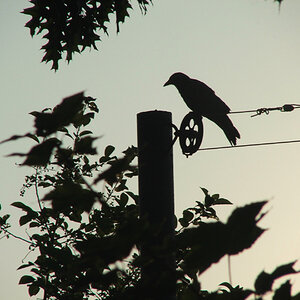
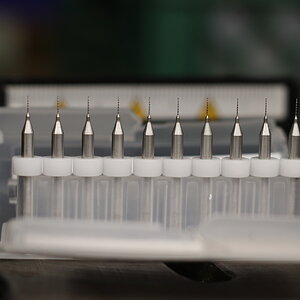
![[No title]](/data/xfmg/thumbnail/37/37134-5a2bb173004bc7a08fdf2124814ebdc1.jpg?1619737884)
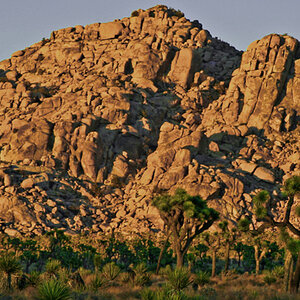
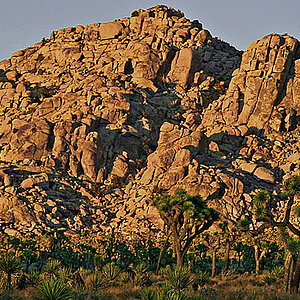
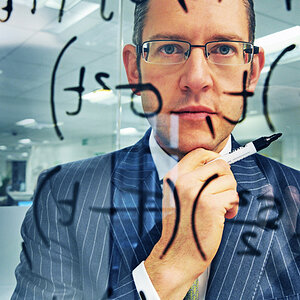
![[No title]](/data/xfmg/thumbnail/31/31041-5783ca3812325c3201a2dd513def662d.jpg?1619734584)
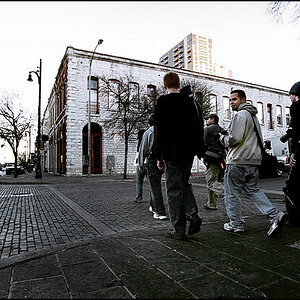
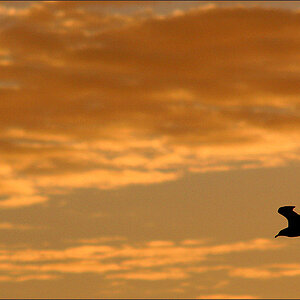
![[No title]](/data/xfmg/thumbnail/37/37117-26c892e756b53ed0359fa90b7ebd99c9.jpg?1619737883)
